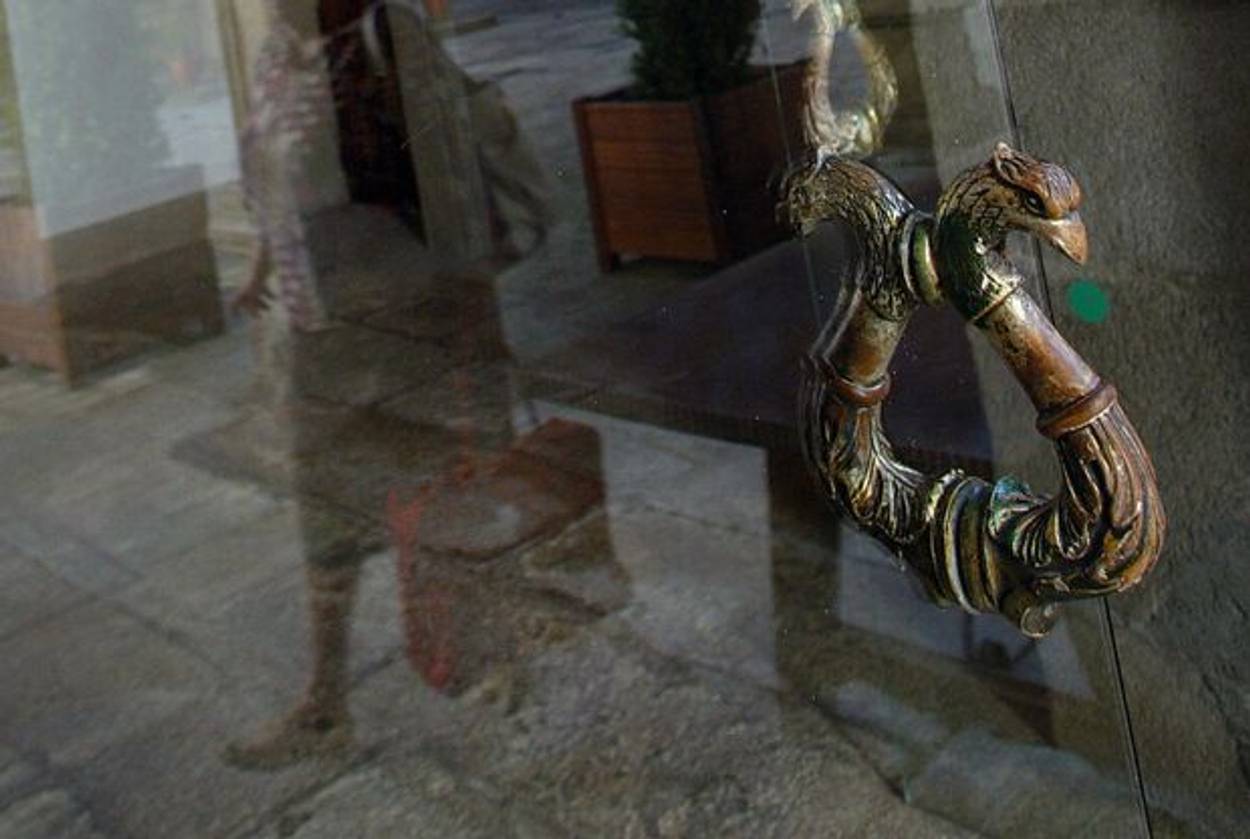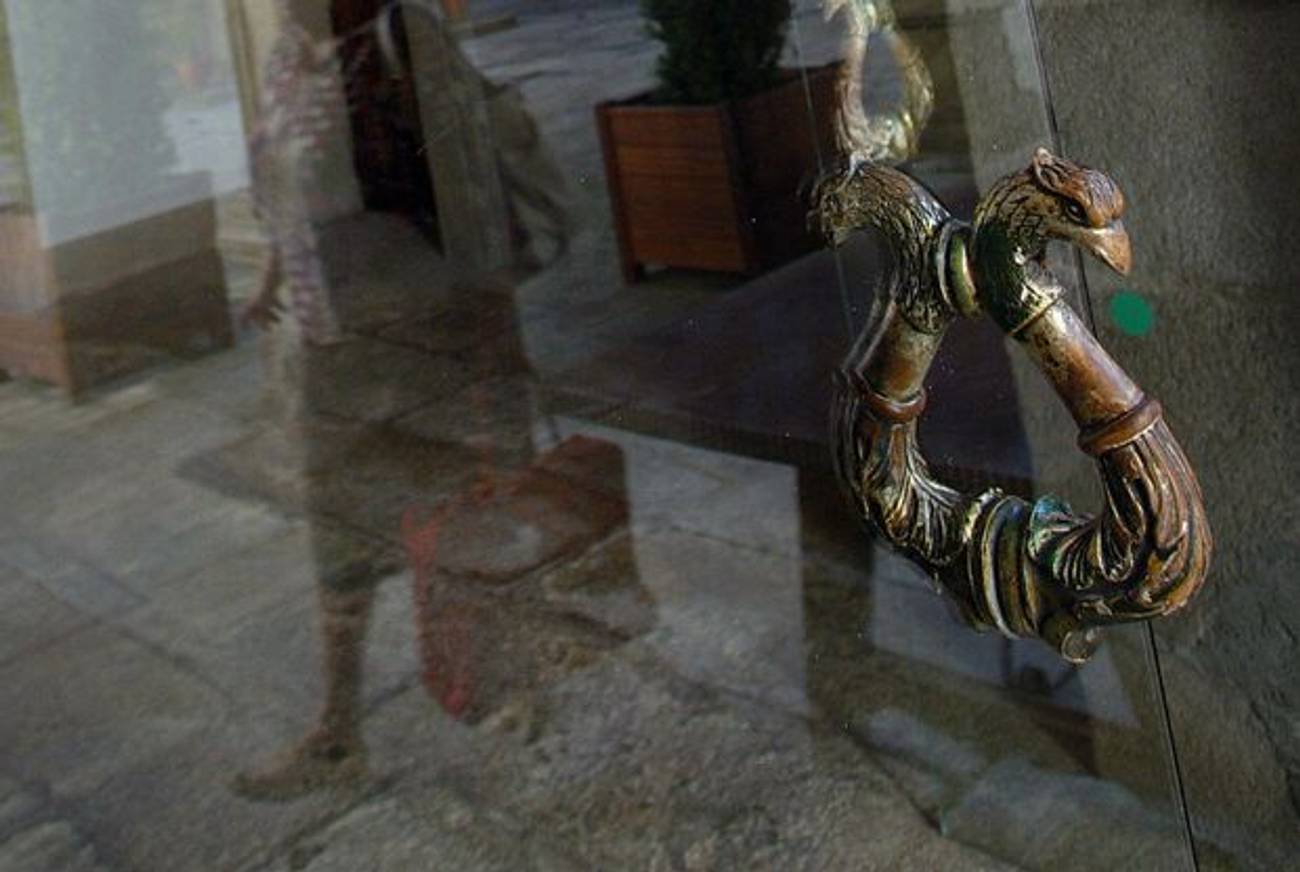A.B. Yehoshua’s Many Ghosts
The writer’s new novel, ‘The Retrospective,’ is a surreal study of the contested sources of Israeli identity




Last month, the Israeli novelist A.B. Yehoshua returned to one of his favorite themes, and reignited a familiar controversy, by telling an audience of American Jews that they were only “partial Jews.” Total Jewishness, Yehoshua proclaimed, can only be achieved in Israel, where every aspect of life is informed by it—from “the angle at which soldiers hold their weapons” to political decisions about territory and security. Unlike the “nice warm Judaism of the weekend” practiced in America, Judaism in Israel is “real and not imaginary.” Naturally, this usurpation of Jewishness by Israeliness raised the hackles of American Jews, as it has done ever since Yehoshua began voicing it in 2006. More interesting than whether Yehoshua is right, however, is the question of how the kind of ideological certainty he displays in his speeches can co-exist with a novelist’s questioning and intellectual playfulness. How, after all, can a professional imaginer denigrate the imaginary? What does an inventor of fictional characters have to do with total identities?
Yehoshua’s new novel The Retrospective, which appeared in Israel in 2011 and has just been published in an English translation by Stuart Schoffman, is in no obvious sense a political book, yet it turns out to have these very questions at its heart. His previous book, Friendly Fire, plunged right into the center of the Israeli-Palestinian conflict, dealing with an Israeli father who grows alienated from his country after his son is accidentally killed by his fellow IDF soldiers. The Retrospective, by contrast, starts out at a great distance from questions of Jewishness and Israeliness, both thematically and physically. It opens in the city of Santiago de Compostela, in Spain, where a small film festival—the retrospective of the title—is being held to honor the work of Yair Moses, a 70-year-old Israeli film director.
It is not hard to draw the connection between Moses and his now 76-year-old creator. Yehoshua’s own experience as an aging but still vigorous man informs Moses’ struggles with the indignities of physical decline and the persistence of desire. In Moses’ case, that desire is focused on Ruth, the now middle-aged actress who has been the star of most of his films and who accompanies him to Spain for the retrospective. Moses, we learn, years before destroyed his happy marriage over an affair with Ruth, yet now the two share a bed without passion. It is as if a ghost hovers over them, keeping them apart.
In fact, there are two ghosts. The first is the shared past embodied in their films, which they go every day to watch at the festival. The whole first half of the novel takes place largely in the dark of the theater, as Moses watches movies that he made some 40 years earlier. To his surprise, the organizer of the retrospective—a film expert who is also a Catholic priest—has chosen only his earliest films to show. Moses bristles at what seems like an insult to his more recent work, yet he also finds himself fascinated to revisit these old films, whose details he barely remembers. The strangeness is increased by the fact that the films are dubbed into Spanish, so that Moses can’t follow the dialogue, relying instead on his uncertain memories to interpret what is happening on screen.
The premise sounds like a dream, or a fable—a man forced to watch his own past in a foreign language. The fact that this is taking place in Santiago de Compostela, the city that was the favorite destination for medieval Christian pilgrims, only increases the mythic burden. And the first half of The Retrospective unfolds at a slow, even static pace, as Yehoshua narrates for us the films he has invented for Yair Moses. (The stilted tone is owed in part to the translation, which is awkward at times, perhaps deliberately. When Moses goes to his ex-wife’s house and drinks a cup of coffee with milk, for instance, we see him “whiten his cup with the milk of his former wife.”)
Each one of these movies, we soon realize, is itself a parable, making use of surreal symbolism. In one film, the residents of a poor Israeli village conspire to derail the express train that speeds past them every day, a symbol of distant wealth and privilege. In another, soldiers ordered to guard a top-secret military installation end up falling into a deep sleep; much of the movie is taken up with shots of their sleeping bodies. These early films are, we learn, very different from Moses’ later work, as the priest points out when he questions him: “In the past two decades, you have turned your back on the surrealistic and symbolic style of your early films and have become addicted to extreme realism that is almost naturalistic. Why? Do you no longer believe in a world of transcendence, in what is hidden, invisible, and fantastical, so much so that you are mired in the mundane and the obvious?” Stated this way, it becomes clear that the dialogue between the young Moses and the old Moses is really a debate between two styles of art, two ways of being—reason and myth, the contemporary and the primal.
Here the second ghost enters the story. The reason Moses’ early films are so different from his later ones, it turns out, is that they were all written by a brilliant, unstable young screenwriter, Shaul Trigano. Trigano and Moses are so complementary that they seem less like separate people than like two faces of the artist’s spirit: the daring, uncompromising, experimental youth and the successful, accommodating adult. Moses has turned his back on his youth, and on Trigano; now they are returning to take their revenge.
The split between director and screenwriter, we learn, happened during the filming of their last movie together. Trigano, who was deeply in love with the actress Ruth, wrote a script in which she played a new mother who has put her baby up for adoption. In the last scene, she comes across a hungry old beggar and breastfeeds him—or she was supposed to, until Ruth objected to what seemed like an ugly and perverse scenario and refused to play along. Fatefully, Moses sided with his star, precipitating a break with his screenwriter that never healed. This, Yehoshua gives us to understand, is the moment when Moses took the side of convention against artistic daring, and in doing so condemned himself as a director and a man.
It comes as a shock to Moses, then, when he discovers in his Spanish hotel room a reproduction of a Renaissance picture that features a young woman breastfeeding a starving old man. This is actually, he learns from a local art historian, a traditional subject in European painting. It is known as “Roman Charity” and comes from an ancient Roman story about a woman who nursed her own father when he was condemned to die by starvation. Its power lies in its combination of maternal purity and the suggestion of incest: “People stop and stare in amazement at this picture,” the art historian tells Moses. “They cannot take their eyes off it, they see it come alive. Even you, sir, a citizen of the twenty-first century, were so agitated by the painting that you sent for me.”
Israeliness, no less than Americanness, turns out to be a product of the imagination.
One of the things that alienates Moses from his own movies, at the retrospective, is the way the titles have been changed to suit the Spanish audience: “Slumbering Soldiers,” for instance, has become “The Installation.” So, it is an appropriate irony that the title The Retrospective, too, is an artifact of translation. In Hebrew, the translator’s note points out, the name of Yehoshua’s book is Hesed Sefaradi—that is, more or less, “Spanish” or “Sephardic Charity.” And it is only with that ghost-title in mind that the novel’s thematic structure starts to cohere. The retrospective, of course, is taking place in Spain, the homeland that the Sephardic Jews had to leave in 1492. Shaul Trigano is a Sephardic Jew from North Africa, as is Ruth; Ruth, in fact, is a stage name, which she adopted to sound more like a “normal,” that is, Ashkenazic, Israeli.
In cutting himself off from Trigano, then, Moses was not just betraying youth and creativity. He was turning his back on the Sephardic imagination, which, as embodied in Trigano, is more organic and daring than his own Ashkenazic imagination. North African immigrants, who arrived in Israel after the founding of the state, were usually shunted into poorer border regions and often discriminated against—so there is also a class element to the antagonism of the two artists.
When the inevitable reunion and confrontation with Trigano comes, late in the book, he makes this explicit: “You were incapable of deviating from your social background, transcending your safe and steady environment to connect with the outlook of someone like me, who came from the margins of society,” Trigano lectures Moses. Not coincidentally, this confrontation takes place in a border village near Sderot, at a time when the area was continually under rocket fire from Gaza. Even now, Yehoshua suggests, the burdens of Israeli society are unequally distributed between Tel Aviv and the “margins,” Ashkenazim and Sephardim.
In this way, The Retrospective, which started out seeming like a personal and even indulgent look at the psyche of an aging artist, turns out to be a study of the contested sources of Israeli identity. The novel’s system of symbols does not quite unfold organically. Like Moses’ early films, there is something deliberately over-explicit about the way certain images return to drive home a point, and this sits uneasily with the elevated realism of Yehoshua’s prose. In its last pages, in fact, The Retrospective tips over completely into surrealism, as it finds its consummation in a literary dream of Spain that is also a healing of the breach between the country and its banished Jews. In the process, Yehoshua drives home a message that is the opposite of the one in his speeches: Israeliness, no less than Americanness, turns out to be a product of the imagination.
Adam Kirsch is a poet and literary critic, whose books include The People and the Books: 18 Classics of Jewish Literature.